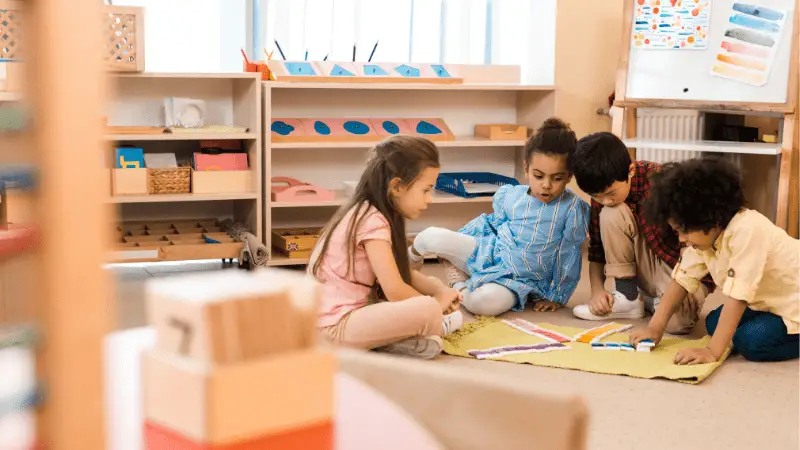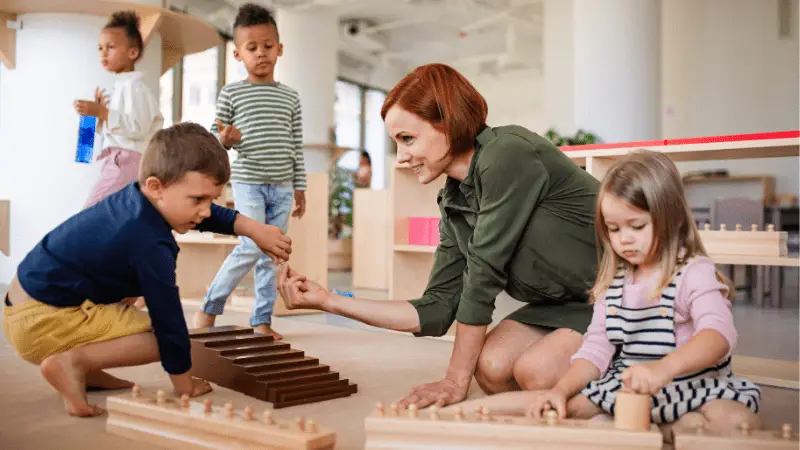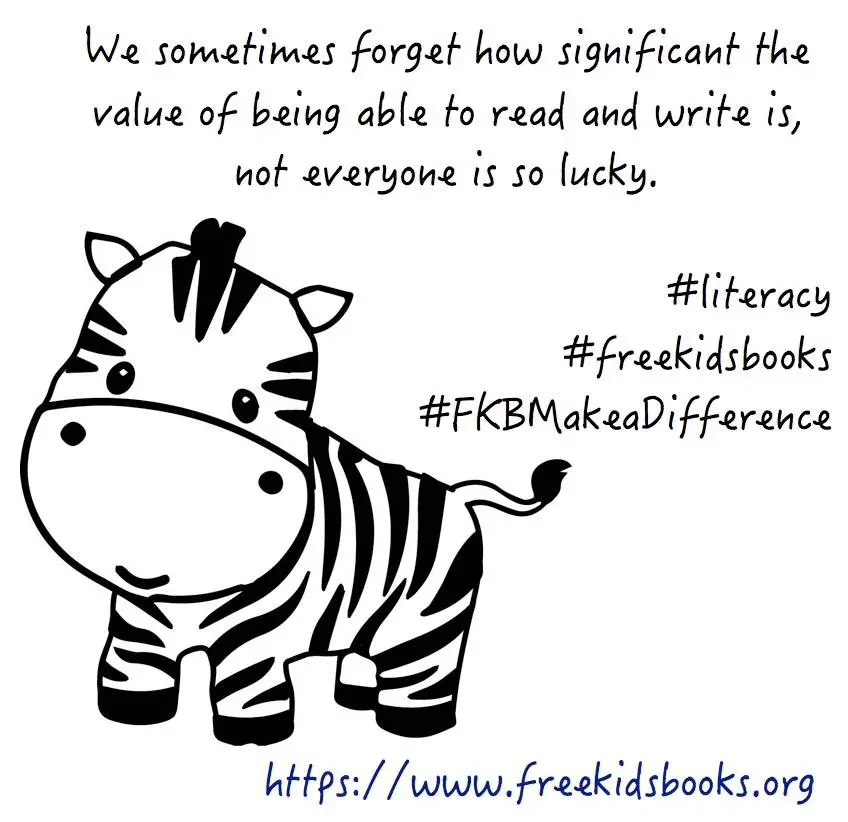 Montessori education is unique in its approach to age groups, emphasizing multi-age classrooms that cater to children’s developmental stages. In Montessori schools, children are grouped into classes that span three years, allowing them to learn at their own pace and benefit from a mix of peers of different ages. This structure provides a rich, collaborative environment where younger children learn from older ones, and older children reinforce their knowledge by teaching younger peers.
Montessori education is unique in its approach to age groups, emphasizing multi-age classrooms that cater to children’s developmental stages. In Montessori schools, children are grouped into classes that span three years, allowing them to learn at their own pace and benefit from a mix of peers of different ages. This structure provides a rich, collaborative environment where younger children learn from older ones, and older children reinforce their knowledge by teaching younger peers.
Starting at the age of 3, Montessori classrooms are divided into specific age groupings, each designed to meet the developmental needs of children. For instance, the Children’s House includes kids aged 3-6, while Elementary is split into two groups: ages 6-9 and 9-12. These mixed-age classrooms foster a sense of community and encourage students to become mentors and leaders.
The curriculum is carefully tailored to support each child’s growth, with activities and lessons that match their developmental stage. Teachers create a learning environment that promotes exploration and independence, making the transition between these age groups seamless and natural. The goal is to nurture each child’s potential and help them become confident, lifelong learners.
The Montessori Method and Its Benefits
The Montessori method offers several benefits including a child-centred approach to learning and promoting independence and personal growth among students.
Child-Centered Approach to Learning
In Montessori education, the child’s needs and interests are the main focus. Each student has the freedom to choose activities that interest them, which increases engagement and motivation.
Classrooms are designed to be engaging environments where children can explore and learn at their own pace. Teachers act as guides rather than traditional instructors, observing and facilitating learning rather than dictating it.
Materials used in Montessori classrooms are hands-on and sensory-based. This helps children understand abstract concepts through tangible experiences. This approach supports the idea that learning should be tailored to each child’s developmental stage and individual pace.
Encouraging Independence and Growth
Montessori education strongly emphasizes fostering independence among students. Children are encouraged to manage their own activities and make decisions about their learning. This builds confidence and self-discipline.
Daily routines in Montessori classrooms involve practical life skills such as organizing, cleaning, and preparing food. These activities help children develop a sense of responsibility and self-sufficiency.
Mixed-age classrooms are another key component of Montessori education. Younger children learn by observing older peers, while older children reinforce their knowledge by teaching concepts to younger classmates. This interaction promotes leadership, empathy, and collaborative skills.
Age Groups in Montessori Education
Montessori education organizes children into age-specific groups to cater to their developmental needs, using mixed-age classrooms to enhance learning and social interactions.
Infant and Toddler Programs (0-3 Years)
In the infant phase (0-18 months), the focus is on creating a secure, nurturing environment. Activities involve sensory exploration and motor skill development. Materials such as soft toys, rattles, and mirrors help infants engage their senses.
For toddlers (18 months-3 years), the aim shifts to fostering independence and practical life skills. Classrooms include low shelves with accessible materials like puzzles, practical life tools, and art supplies.
Toddlers also start learning social skills by interacting with peers. Simple routines and tasks such as pouring water or dressing themselves build confidence and fine motor skills.
Preschool and Kindergarten Programs (3-6 Years)
In the preschool phase (3-6 years), children experience more structured learning while still enjoying a degree of freedom. Activities cover areas such as language, math, sensory education, and cultural subjects.
Classrooms are designed to allow children to choose activities independently, encouraging self-paced learning. Materials like sandpaper letters for language and number rods for math are commonly used.
Social interaction is crucial; children learn from interacting with older or younger peers, gaining various perspectives. They acquire foundational academic skills while also developing emotional and social capabilities through group activities and collaborative tasks.
Curriculum for Different Age Groups
Montessori education tailors learning activities to each age group and promote mixed-age classrooms, benefiting all students at different developmental stages.
Tailored Learning Activities for Age Groups
Montessori curriculums are customized to fit the needs of each age group. Infants (0-18 months) focus on sensory experiences and basic motor skills. Toddlers (18 months-3 years) engage in activities that develop practical life skills, like pouring and scooping.
Preschoolers (3-6 years) build on these skills with more complex tasks, such as early reading, writing, and simple math concepts. For Elementary students (6-12 years), the curriculum expands to include subjects like science, history, and advanced math.
Adolescents (12-18 years) are guided through more abstract thinking and real-world applications, preparing them for adult life. Activities become interdisciplinary, involving projects that require collaboration and critical thinking.
Mixed-Age Classroom Benefits in Montessori
Mixed-age classrooms are a cornerstone of Montessori education. In these settings, children of different ages learn together, typically in three-year spans. For example, Children’s House (3-6 years), Lower Elementary (6-9 years), and Upper Elementary (9-12 years).
This arrangement allows older students to mentor younger ones, reinforcing their own knowledge. Younger students benefit from observing and emulating older peers, accelerating their learning process.
Teachers can focus more on guiding individual progress, as the mixed age group creates a more collaborative and less competitive environment. The three-year cycle fosters strong community bonds, enabling consistent support and growth. This approach helps address various developmental needs efficiently within one classroom.

Choosing the Right Montessori School
Selecting a Montessori school involves careful consideration of specific factors to ensure it aligns with a child’s needs. First Academy Montessori stands out for its dedicated approach.
Factors to Consider When Choosing
When selecting a Montessori school, parents should evaluate several key factors. The school and teachers’ accreditation and credentials ensure a high standard of education. Look into the class size and student-to-teacher ratio. Smaller classes often mean more personalized attention.
Check if the school offers a full three-year cycle for age groups. A well-structured environment with the right materials greatly supports learning. Additionally, consider the school’s philosophy and how closely it aligns with traditional Montessori principles.
Why First Academy Montessori is the Best Choice for Montessori Education
First Academy Montessori has a proven track record of excellence. The school is fully accredited and employs highly trained, certified Montessori educators. Class sizes are small, ensuring each child receives individual attention and guidance. The school carefully crafts a three-year cycle curriculum across all age groups, supporting long-term developmental growth.
Classrooms are well-equipped with authentic Montessori materials. The environment is designed to promote independence and a love for learning. The school’s philosophy adheres closely to traditional Montessori methods, ensuring consistency and reliability in education.
Parents choose First Academy for its commitment to a nurturing, comprehensive Montessori experience.
Frequently Asked Questions
This section covers common inquiries about the different age groups and structures within Montessori education. It highlights the advantages and potential issues of mixed-age classrooms and details the availability of Montessori programs at various educational levels.
What is the typical age range for children to attend Montessori preschool?
Children usually start Montessori preschool between the ages of 3 to 6. The environment here is designed to work with their absorbent minds, sensitive periods, and developmental tendencies.
How are grade levels structured within a Montessori educational environment?
Montessori education divides students into multi-age groups. Typical categories include Infants (0-18 months), Toddlers (18 months-3 years), Preschoolers (3-6 years), and Elementary students (6-12 years). This structure supports their developmental stages.
What benefits are associated with mixed-age classrooms in Montessori schools?
Mixed-age classrooms offer many benefits, including peer teaching, social skills development, and a personalised learning pace. Older children reinforce their knowledge by teaching younger ones, and younger children learn by observing their older peers.
Are there any potential drawbacks to mixed-age learning models in education?
One potential drawback of mixed-age classrooms is that younger or less mature students might feel overwhelmed. Additionally, teachers need to balance varying educational needs and paces, which can be challenging.
Is there a Montessori curriculum available for secondary education levels?
Yes, Montessori programs extend beyond early childhood. There are Montessori curriculums for adolescents aged 12-15 and secondary students aged 15-18, focusing on fostering independence and real-world skills.
At what age do children typically start Montessori education?
Children can start Montessori education as early as infancy, around 2 months old. Programs for infants focus on sensory exploration and initial motor skills, setting a foundation for future learning stages.









